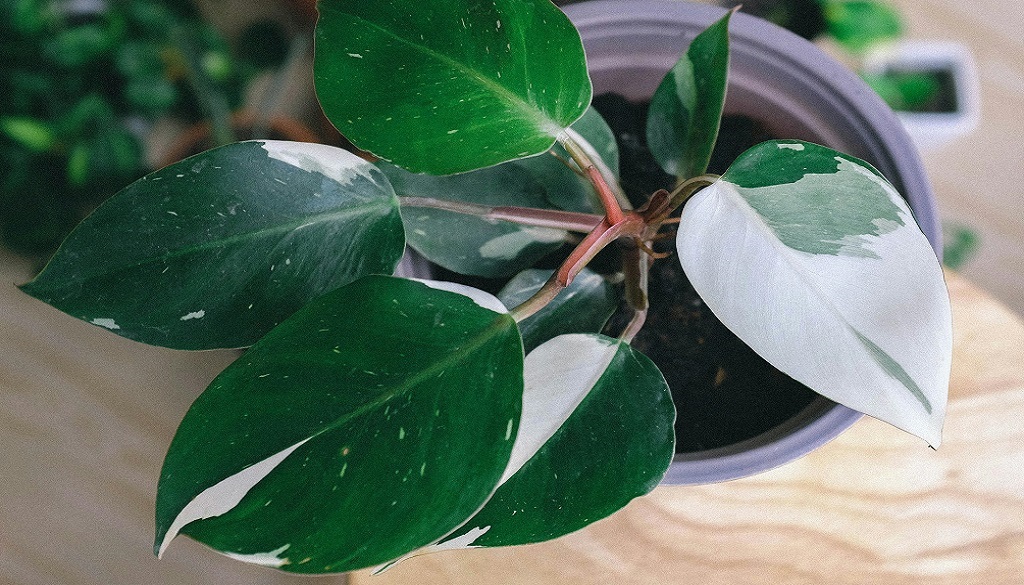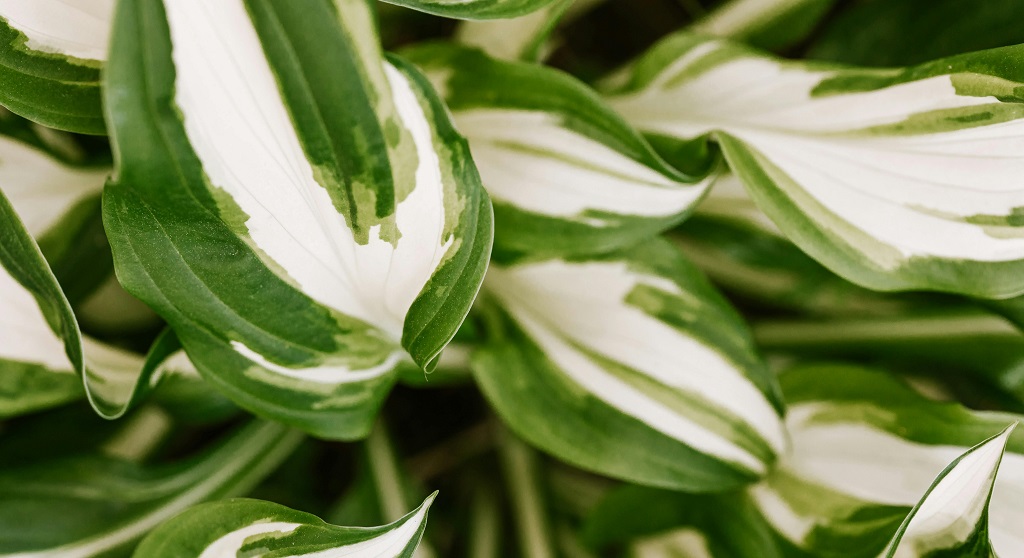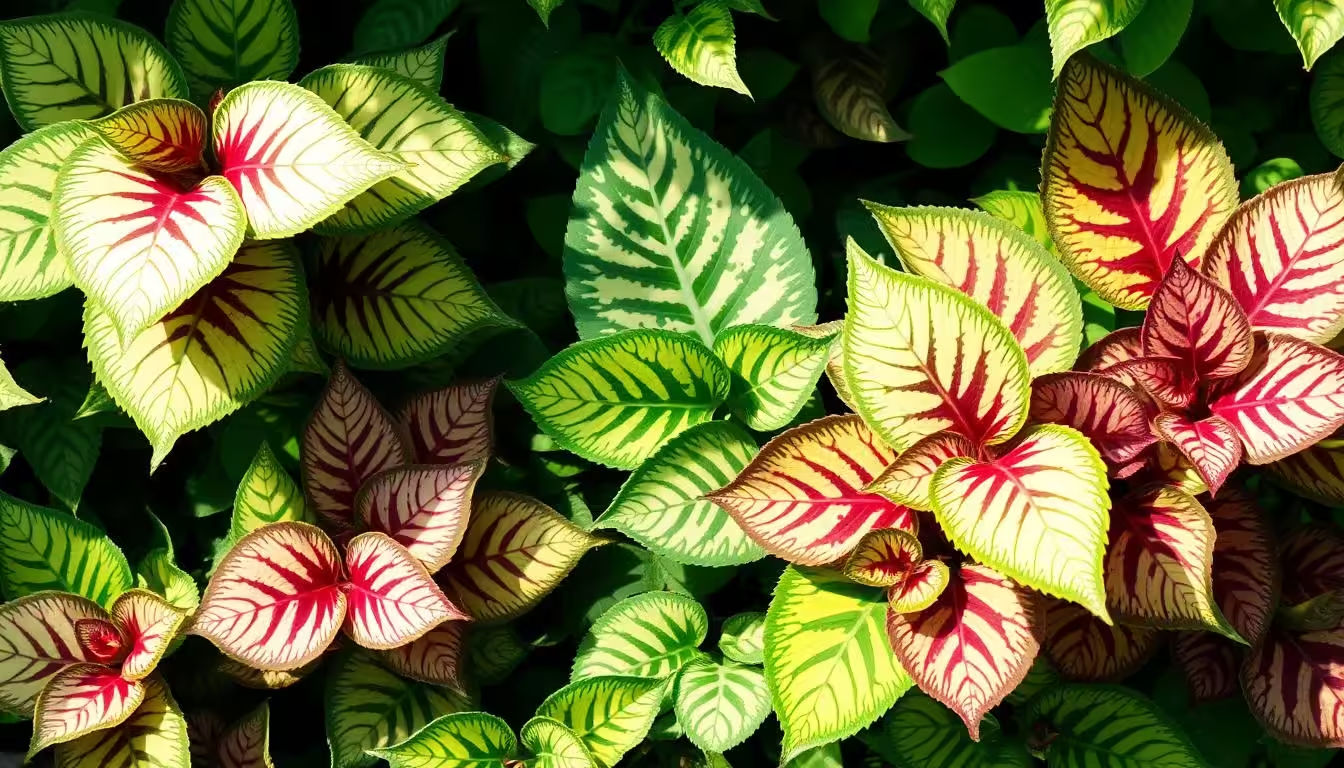I’ve always been drawn to the beauty of variegated plants. These colorful wonders turn any space into a vibrant oasis. Their unique shades and patterns capture the heart of plant lovers.
Variegated plants have become very popular lately. They offer a special look that stands out from solid-colored plants. They can make any space feel like a sanctuary.
Key Takeaways
- Variegated plants feature stunning multicolored foliage that adds visual interest to any space
- These nature-inspired masterpieces have become increasingly popular among plant enthusiasts
- Variegated plants can elevate the aesthetic of both indoor and outdoor living spaces
- Explore the diverse world of variegated plants to find the perfect addition to your collection
- Appreciate the unique beauty and captivating charm of these natural wonders
Introducing the Captivating World of Variegated Plants
Get ready to be amazed by the stunning world of variegated plants. These plants are loved by many for their unique patterns and colors. But what is variegation in plants, and why do people find it so captivating?
What is Variegation in Plants?
Variegation in plants means they have striking patterns and colors on their leaves. These colors are different from the usual green. This happens because of genetic changes or environmental factors that affect how plants make chlorophyll, the green pigment.
The Appeal and Growing Popularity of Variegated Plants
The beauty of variegated plants has made them very popular. They are now a favorite in indoor gardens for their unique look. As more people see the beauty of plant variegation, the demand for these plants keeps growing.
“Variegated plants have a timeless allure that transcends trends, captivating the hearts of plant lovers worldwide.”
Exploring the Science Behind Variegation
Variegated plants amaze us with their beautiful color patterns. But have you ever thought about what causes this? The science of variegation in plants is complex. It mixes genetic changes with environmental factors.
Genetic Mutations and Chlorophyll Production
Genetic changes are at the core of variegation. These changes can mess with how plants make chlorophyll. This leads to different colors in the leaves.
Some plant variegation is natural. But, methods like tissue culture can increase their variety. This adds to the range of variegated plant types.
Environmental Factors Influencing Variegation
- Light intensity: The light a plant gets affects its variegation. Some need bright, indirect light to keep their colors sharp.
- Temperature fluctuations: Changes in temperature can start or stop variegation. It can also make colors fade or change back to green.
- Nutrient imbalances: Too little or too much of certain nutrients can mess with chlorophyll. This leads to variegation.
- Viral infections: Viruses like Tobacco Mosaic Virus (TMV) can cause mosaic patterns. This adds to the variegated look.
Understanding variegation helps us better appreciate these types of plants. We see their amazing ability to adapt to their surroundings.
| Pigment | Function | Association with Variegation |
|---|---|---|
| Chlorophyll | Responsible for the green color in plants and photosynthesis | Disruptions in chlorophyll production lead to variegation |
| Carotenoids | Provide yellow, orange, and red pigments | Contribute to the color variation in variegated plants |
| Anthocyanins | Responsible for red, purple, and blue pigments | Can also influence the colors observed in variegated leaves |
By looking into the science of variegation in plants, we learn about the amazing ways plants display color.
Types of Variegation Patterns in Houseplants
The world of variegated plants is full of amazing patterns. You’ll find everything from variegated foliage plants to variegated house plants and variegated hanging house plants. The variety of variegated flowering plants and variegated tropical plants is incredible. These tropical house plants with variegated leaves show nature’s art in stunning ways.
There are many types of variegation. Marginal variegation shows patterns at the leaf edges. Central variegation has a green border around a variegated center. Mosaic variegation has irregular color patches.
Sectorial variegation creates a half-leaf look. Blotched variegation has large, irregular patches. Striped variegation has long stripes. And spotted variegation has dots all over the leaf.
This variety makes these plants stand out. They are true works of art in the plant world. Whether you’re a seasoned collector or just starting, variegated houseplants will amaze and inspire you.

“The rarity of variegation in houseplants adds to their allure, making them prized possessions among enthusiasts and collectors.”
Variegated Plants: Nature’s Evolutionary Adaptation
Variegation in plants is more than just a pretty sight. It shows how plants can survive and grow in many places. Scientists think it helps plants in some way, but they’re still figuring out how.
Genetic changes can make leaves show different colors. Things like light, temperature, and nutrients can change how these colors look. Growing these plants in labs has made it easier to share their beauty with the world.
Variegated leaves can hide plants from hungry animals. They can also help plants grow better in dim light. This shows how plants’ looks can help them survive.
Variegated plants live in many places, from warm forests to cool climates. Scientists have found links between how plants look and their surroundings. This helps us understand how plants adapt to their environments.
“Variegation in plants is not just a visual feast; it is a testament to nature’s ingenious adaptations, where form and function seamlessly converge.”

If you love plants or just enjoy nature, variegated plants are amazing. They show how plants have adapted to live in different places. Learning about plant variegation helps us see the beauty and strength of nature’s creations.
Environmental Factors Causing Variegation
Variegated plants are loved for their unique patterns and colors. But, what makes them so special? It’s often the environment that shapes their look. Knowing how these factors work helps us enjoy their beauty even more.
Light Intensity And Its Impact On Plant Variegation
Light is key in creating variegation. When plants get different amounts of sunlight, they grow in different ways. This can make leaves look lighter or darker, creating beautiful patterns.
Temperature Fluctuations and Their Effects
Changes in temperature also affect variegation. Plants adjust to these changes by altering their chlorophyll levels. This can lead to striking color patterns on their leaves.
Nutrient Imbalances and Their Role On Variegated Plants
Nutrients like nitrogen and phosphorus are important for plants. Too much or too little can cause variegation. This is because it affects how plants make chlorophyll.
Viral Infections and Their Influence
Some viruses, like Tobacco Mosaic Virus, can mess with chlorophyll production. This can result in variegated leaves. It’s like the plant’s natural color is disrupted.
Understanding these environmental factors helps us care for this type of plants. We can then enjoy their vibrant colors and patterns even more.

Genetic Mutations: The Root of Variegation
Genetic mutations are at the core of variegated plants. These random changes in DNA affect how plants make chlorophyll. This leads to leaves showing colors other than green.
These mutations happen in plant cells, not in reproductive cells. So, parts of the plant can have more or less chlorophyll. This creates amazing patterns and colors.
Recent studies found that variegation in plants have bigger plastomes. The plastome of Dianella tasmanica can be up to 228,878 base pairs. This is one of the largest in land plants.
A big change in the plastome’s structure is involved. A 78,236-bp region moved from one part to another. This made the LSC region very small, just 92 base pairs.
Variegation in plants is rare and highly sought after. Techniques like tissue culture help increase their chances of occurring. This makes them even more special.
“Genetic mutations can change how the genes that make chlorophyll are expressed, leading to variegation in plants.”
Genetic mutations and environmental factors combine to create variegated plants’ stunning looks. These traits can help plants survive and thrive. They can camouflage, deter herbivores, or improve photosynthesis in low light.
Studying variegation helps us understand plant diversity and adaptability. From the biggest plastomes to the smallest single-copy regions, it’s all fascinating.
Cultivation Techniques for Variegated Houseplants
Growers and horticulturists have found ways to grow and improve variegated plants. One method is tissue culture. It involves growing plant parts like leaves or stems in a clean, nutrient-rich space. This way, they can make many copies of the original variegated plant.
Tissue Culture and Its Role On Variegated Plants
Tissue culture is a key tool for growing variegated houseplants. It helps by growing plant cells in a clean, nutrient-rich space. This method makes it easier to get variegated plants. It’s very helpful for those who love and collect plants.
Plant Breeding for Variegation
Plant breeding is also important for growing variegated houseplants. Breeders cross different variegated plants to make new ones. This way they can create an even more unique variegation of plants. It’s a way to make new and interesting plants.
Growers and horticulturists are always finding new ways to propagate variegated plants. They use both tissue culture and plant breeding. Their hard work and creativity keep the world of variegated houseplants exciting and colorful for everyone.
“The rarity of variegation adds to their allure, making them prized possessions among enthusiasts and collectors.”
Variegated plants
The world of variegated plants is vast and diverse. It includes many species and cultivars. From the variegated rubber plant to the variegated jade plant, they add beauty to any space. The variegated ZZ plant, variegated banana plant, and variegated string of pearls plant are just a few examples.
These plants are becoming more popular. They have unique patterns due to genetic or environmental changes. This makes them stand out.
- Techniques like Tissue Culture (TC) can enhance the likelihood of variegation in plants, increasing their desirability and diversity.
- Various types of variegation patterns exist, such as Marginal, Central, Mosaic, Sectorial, Blotched, Striped, and Spotted Variegation.
- Environmental factors like light intensity, temperature fluctuations, nutrient imbalances, viral infections, and genetic mutations can contribute to variegation in plants.
Variegated plants are versatile. They include species like agave variegated plants and ficus variegated plant. They thrive in many settings, indoors and outdoors.
From variegated cactus plants to variegated monstera plant, these plants enchant many. They include variegated snake plant and variegated succulent plants. They are a joy for gardeners and indoor plant lovers.
Whether you like variegated hanging plants or variegated trailing plants, there’s much to explore. The world of variegated plants is a colorful canvas for your space.
Conclusion
Variegated plants are nature’s amazing creations, showing off the plant world’s diversity and flexibility. Their colorful leaves and unique traits have won over many garden fans and plant lovers. By learning about variegation, patterns, and how to grow them, we can truly appreciate their beauty.
These plants add beauty to both indoor and outdoor spaces, inspiring and delighting us. Their rarity makes them even more special, sought after by plant enthusiasts. Let variegated houseplants bring charm and beauty to your home.
Plant variegation is a true wonder of nature, showcasing the plant world’s vast diversity and adaptability. These colorful wonders will continue to amaze and inspire plant lovers for years to come. They remind us of the endless beauty and wonder in our natural world.
FAQ
What is variegation in plants?
Why are variegated plants so popular?
What are the different types of variegation patterns in plants?
How do environmental factors influence the development of variegation?
What is the genetic basis of variegation in plants?
How can variegated plants be propagated and cultivated?
What are some popular examples of variegated houseplants?
Want To Learn More, Check Out These Links:
- The World of Variegation In Succulents and How to Care for Them
- Variegation In Plants – Hardy Plant Society
- The beauty of Variegation In plants: A colourful journey into nature’s palette – TerraHub
- Variegation: Patterns on leaves – Lizzie Harper
- Investigating the Adaptive Potential of Leaf Variegation in Two Dimorphic Hexastylis Species
- Variegation and colour in plants • Tradescantia Hub
- The Fascinating World of Variegation in Plants— AquaTerra
- Leaf variegation caused by plastome structural variation: an example from Dianella tasmanica
- 🌱 Complete Guide to Succulent Variegation | HOJNY Succulents
- The Ultimate Guide to Variegation in Houseplants: A Complete Overview
- Do Your Plant Leaves Have a Pattern? It Could Be Caused by Summer Sun—What to Know
- Variegation Rules

